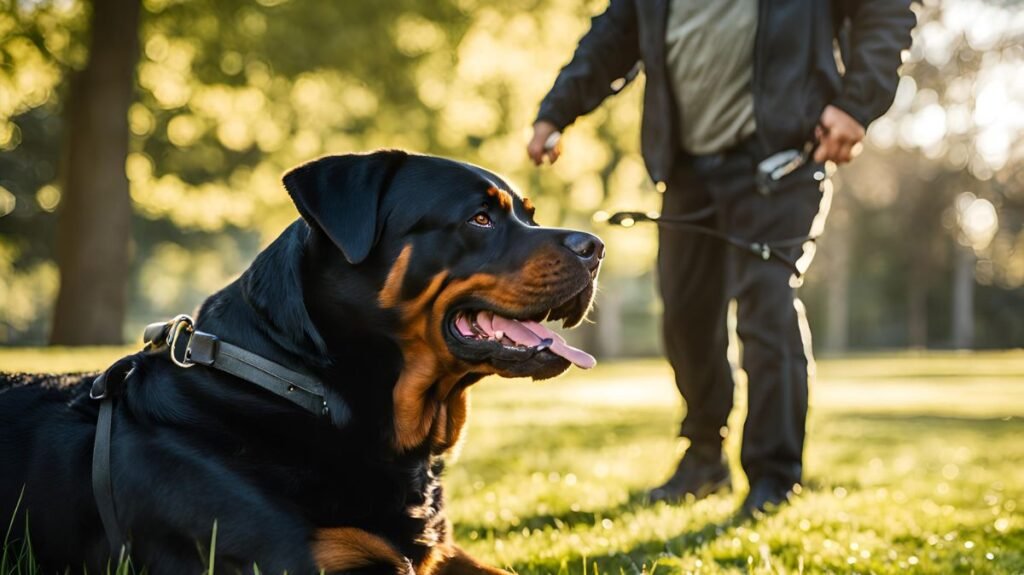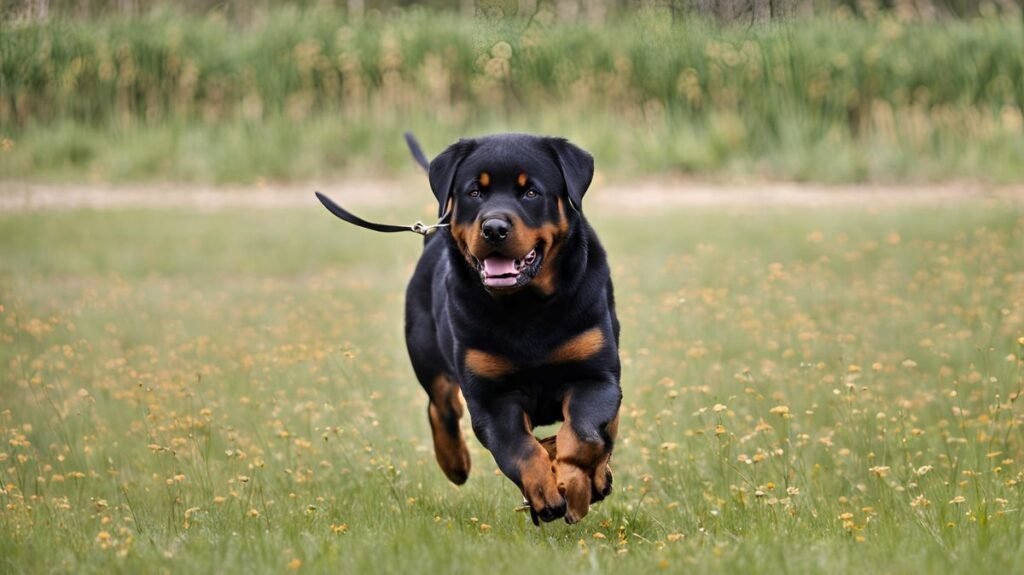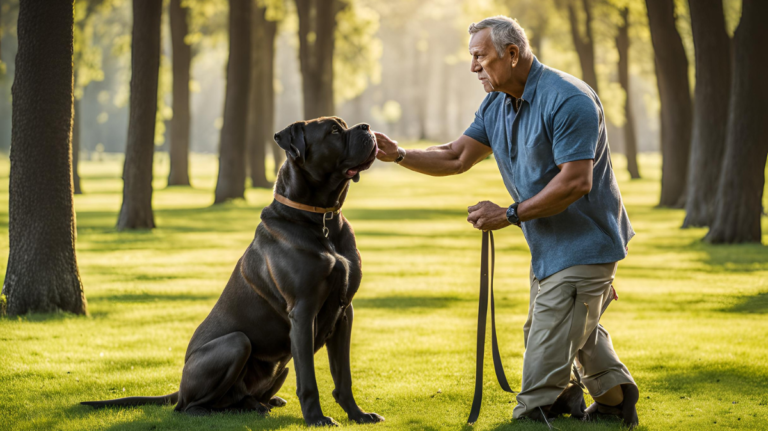Training your Rottweiler is an integral part of ensuring they are a well-behaved companion. Due to their natural protective instincts and strong-willed nature, consistent training is crucial for both their safety and that of others around them. By understanding their unique temperament, you’ll be better equipped to employ effective training strategies.

Key Takeaways
| Key Point | Summary |
|---|---|
| Importance of Training | Effective for safety and social harmony. |
| Rottweiler Traits | Intelligent, protective, loyal. |
| Training Approach | Consistency and positive reinforcement. |

Understanding Rottweiler Behavior
Before commencing any training regimen, it’s important to understand the temperament of a Rottweiler. Known for their loyalty, they can also exhibit stubbornness if not trained properly. Recognizing these traits can aid in formulating the right training approach.
Rottweiler Temperament
- Loyal and protective
- Intelligent and eager to learn
- May exhibit stubborn behavior
“Understanding your Rottweiler’s temperament is the cornerstone of effective training.”
Essential Training Tools
When training your Rottweiler, having the right tools can significantly impact your success.
Recommended Tools
- Leashes and Collars: Choose sturdy, adjustable types.
- Training Treats: Use as rewards for positive behavior.
Basic Obedience Training
Teaching basic commands is the foundation of any dog’s training. With Rottweilers, maintaining consistency and using positive reinforcement can enhance the effectiveness of the training sessions.
Key Commands
- Sit: Use treats to guide them into a sitting position.
- Stay: Teach patience and control.
- Come: Essential for recall and safety.
Positive Reinforcement Techniques
Positive reinforcement is about rewarding good behavior to encourage it in the future. This method is highly effective with Rottweilers due to their intelligence.
- Rewards: Treats, verbal praise, or playtime.
- Consistency: Regular practice solidifies learning.
“A well-trained Rottweiler is not only happier but also less likely to develop behavioral problems.”

Advanced Training Techniques
Once basic obedience is ingrained, moving to advanced training techniques can further enhance your Rottweiler’s skills.
Off-Leash Training
- Importance: Increases freedom while ensuring control.
- Approach: Start in a secure area, gradually expand to parks or open spaces.
Agility Exercises
Agility training helps to keep your Rottweiler physically fit and mentally stimulated.
- Excercises: Weaving poles, jumping through hoops.
- Benefits: Builds endurance and enhances coordination.
Socialization Strategies
Proper socialization can help prevent aggression and anxious behaviors in Rottweilers, ensuring they are comfortable in various environments.
Interaction with Other Dogs
Introducing your Rottweiler to other dogs can build positive relationships and decrease territorial aggression.
- Initial Meetings: Neutral grounds can prevent territorial behavior.
- Supervision: Always monitor during first interactions.
Exposure to Different Environments
Exposing your Rottweiler to new environments helps them adapt to changes without stress or anxiety.
- Techniques: City walks, parks, noise desensitization.
- Outcome: A calm and adaptable companion.
Common Mistakes to Avoid
Training a Rottweiler comes with its own challenges. Identifying and avoiding common mistakes ensures a smoother training journey.
Mistakes to Avoid
- Inconsistent Training Routines: Can confuse and slow learning.
- Negative Reinforcement: May lead to fear or aggression.
Tips for Success
- Create a consistent schedule.
- Always end training sessions on a positive note.
Working with Professional Trainers
There may be times when you’ll need the expertise of a professional trainer. Recognizing when to seek help and selecting the right trainer is vital to your Rottweiler’s development.
When to Seek Help
- Persistent behavioral issues
- Lack of progress in basic training
- Specialized skills are desired
Choosing the Right Trainer
Take the time to assess potential trainers to ensure they align with your training philosophy and goals.
- Qualifications: Look for certifications and years of experience.
- Methods: Ensure they use positive reinforcement techniques.
“A skilled trainer can transform challenging behaviors into successes.”
Tailoring Training to Suit Your Rottweiler
Every Rottweiler is unique, and customizing training based on their age and personality can yield better results.
Age-Specific Training Needs
- Puppies: Focus on socialization and basic commands
- Adults: Reinforce obedience and introduce advanced skills
Personality-Based Techniques
- Timid Dogs: Use gentle, encouraging methods.
- Bold Dogs: Establish boundaries while reinforcing commands.

Building a Training Schedule
| Training Component | Frequency |
|---|---|
| Basic Commands | Daily |
| Advanced Skills | 3-4 times a week |
| Socialization Trips | Weekly |
Creating a structured training schedule can help track progress and ensure consistency in your Rottweiler’s training routine.
Components of a Successful Training Schedule
- Daily Routine: Short, frequent sessions are more effective.
- Progress Tracking: Keep notes on improvements and areas needing work.
Specialized Commands for Rottweilers
Specialized commands are useful for Rottweilers due to their protective nature and can be integrated into their training once they have mastered basic obedience skills.
Guard Commands
Train your Rottweiler to recognize situations that require protective actions without aggression.
- Command Example: “Watch” to stay alert.
‘Leave It’ Command
This command helps prevent your Rottweiler from picking up or focusing on unnecessary objects.
- Training Method: Use treats to distract and reward when the command is followed successfully.

Benefits of Regular Training
Consistent training provides numerous benefits, ensuring that your Rottweiler is a well-behaved and happy companion.
- Improved Behavior: Reduces unwanted habits and instills good manners.
- Stronger Bond with Owner: Training sessions strengthen the relationship between you and your Rottweiler through mutual understanding and communication.
“The greatest benefit of consistent training is the harmonious bond it creates between you and your Rottweiler.”

Conclusion
Training your Rottweiler is an ongoing process, requiring patience, consistency, and understanding. Through the use of tailored techniques, the right tools, and professional guidance when necessary, you can effectively teach your Rottweiler to be an obedient and delightful companion. By fostering a structured routine, you not only nurture your Rottweiler’s development but also build a robust and rewarding relationship.
FAQ
How early should I start training my Rottweiler puppy?
Training should begin once your puppy is comfortable and settled in their new home, generally starting around 8 weeks of age.
Can Rottweilers be trained by someone without prior dog training experience?
Yes, dog training experience is not mandatory. With patience and consistency, anyone can effectively train their Rottweiler.
How long should each training session be?
Sessions should be about 5-10 minutes for puppies and 15-20 minutes for adult Rottweilers to maintain focus without overwhelming them.
How do I correct unwanted behavior in my Rottweiler?
Use positive reinforcement and redirect their attention to prevent the continuation of unwanted behavior.




